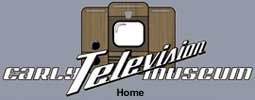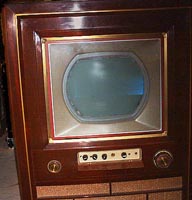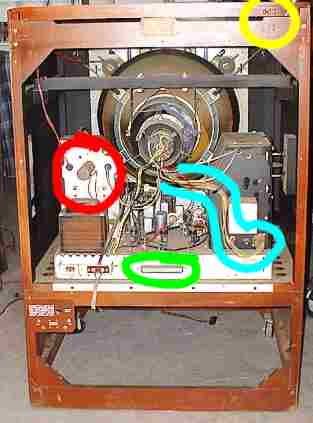CT-100 caretakers who generously contribute the serial numbers of their wards to the Living CT-100 list sometimes are unaware of the location of the numbers. RED surrounds the back of the rectifier cage where the octal-base ballast resistor assembly hangs over the hefty power transformer. BLUISH (cyan) outline snakes around the yoke-cable shown here with its factory-correct lead dress terminating in another octal base that plugs into the lower right of the high-voltage cage. GREEN encircles a rivited-to-the-CTC-2-chassis candohm resistor that (occasionally) hides part of the CTC-2 chassis serial number located just below the venerable resistor.
|


